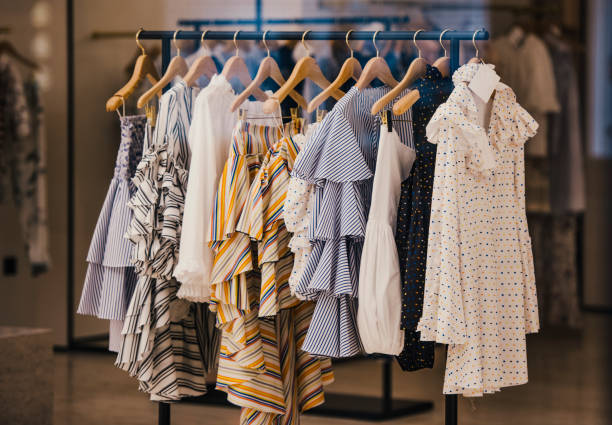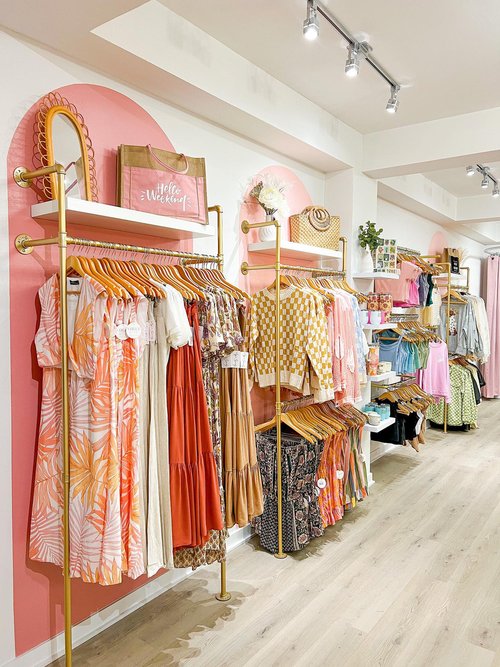Discovering the World of Sustainable Boutique Fashion Brands
Wiki Article
Lasting Fashion: How Eco-Friendly Apparel Is Forming the Future of Style
As the apparel industry faces increasing analysis over its ecological impact, the surge of lasting style uses an appealing alternative that lines up style with environmental obligation. Utilizing ingenious products such as plant-based materials and recycled fibers, along with advanced techniques like electronic and 3D printing, developers are redefining what it indicates to be trendy in the modern-day age. Concurrently, the expanding appeal of upcycling and second hand society is cultivating a shift towards a round economy. Just how does this motion genuinely influence the future trajectory of style, and what obstacles exist ahead in its widespread fostering?Ingenious Lasting Materials
As the style market grapples with its environmental influence, ingenious lasting materials have arised as an important solution for minimizing environmental footprints. These materials not only minimize dependence on fossil gas yet likewise decrease dangerous chemical usage and water usage.In addition to plant-based materials, innovations in biofabrication have led to the advancement of lab-grown textiles. Mycelium leather, originated from mushroom roots, presents a flexible and biodegradable choice to animal natural leather. Its manufacturing leads to significantly lower carbon discharges and water usage, making it a much more sustainable choice for stylist looking for to straighten with eco-friendly practices.
Recycled products are likewise acquiring traction, with polyester made from recycled plastic bottles standing for a substantial innovation. This advancement not just diverts plastic waste from landfills and seas however also reduces power usage compared to producing virgin polyester. With each other, these products highlight the capacity for a much more lasting apparel industry, leading the way for eco conscious design and manufacturing.
Eco-Conscious Production
Structure on the advancements in sustainable products, the fashion sector is additionally re-evaluating its manufacturing procedures to additionally decrease environmental impact. Trick methods include decreasing water usage, minimizing carbon discharges, and removing harmful chemicals. By adopting closed-loop systems, makers intend to reuse water and energy efficiently, considerably lessening waste. The assimilation of eco-friendly energy resources, such as solar and wind power, into manufacturing facilities additionally curtails dependence on fossil fuels.Another essential facet is the reduction of hazardous chemicals commonly used in dyeing and ending up fabrics. Eco-conscious producers are shifting towards plant-based dyes and waterless dyeing innovations, which not only guard neighborhood communities however additionally enhance worker safety. Developments like electronic printing minimize textile waste and power usage, supplying a cleaner alternative to conventional approaches.
With the advancement of blockchain modern technology, firms can currently give in-depth understandings into their supply chains, ensuring environmentally pleasant and honest practices at each action. As the demand for eco-conscious items grows, producers are compelled to introduce, making sure that the future of style is both lasting and stylish.
The Surge of Upcycling
Upcycling, a transformative technique in sustainable style, includes creatively repurposing thrown out products into brand-new, top notch products. This cutting-edge strategy not just reduces waste however also lessens the demand for raw materials, consequently minimizing the environmental effect of clothes manufacturing. By reimagining and reconstructing existing things, developers and style brand names are able to instill creativity into their collections while promoting ecological responsibility.
Furthermore, the upcycling motion has encouraged tiny organizations and independent developers, that typically lead in development because of their agility and imagination. By maximizing the abundant availability of unused materials, these entities add to a circular economic situation, demonstrating that fashion can be both lasting and trendy. Via upcycling, the market takes considerable strides in the direction of a much more liable and conscious future.
Thrift Society's Influence
The blossoming thrift society substantially improves the landscape of lasting fashion, emphasizing the value of mindful intake. This social change encourages customers to embrace secondhand clothes, consequently minimizing the demand for brand-new garment manufacturing and find more info lessening ecological impact. Second hand shopping not just expands the lifecycle of clothes however additionally decreases the carbon footprint linked with manufacturing, moving, and taking care of clothing.A vital element of second hand society is its democratization of fashion. By supplying a large selection of styles from different periods at budget-friendly costs, second hand stores make style accessible to a broader audience. This availability fosters a sense of individuality and creative thinking, as customers mix and match distinct pieces to curate tailored closets without adding to the fast fashion cycle.
Moreover, thrift culture promotes circularity in vogue, straightening with the principles of a circular economic climate. By recirculating garments, the cycle of waste is interfered with, and resources are saved. This method sustains a change from a direct "take-make-dispose" version to an extra lasting structure. As even more developers and customers welcome second hand society, the fashion business is obliged to adapt, integrating sustainable practices to fulfill the growing need for eco-conscious choices.

Future Trends in vogue
Fashion's development is significantly shaped by technological technologies and sustainability-driven campaigns. One famous trend is the increase of digital style, where virtual garments can be used in increased fact environments, substantially lowering fabric waste.Furthermore, the assimilation of blockchain modern technology offers new opportunities in openness and traceability, allowing consumers to verify the sustainability credentials of their garments. boutique fashion. This makes certain accountability in supply chains and promotes ethical sourcing methods. 3D printing is yet one more advancement that guarantees to change manufacturing processes by enabling on-demand production, thereby reducing excess supply and waste
Additionally, the development of bio-fabricated materials, such as lab-grown natural leather and plant-based fabrics, offers lasting alternatives to traditional materials. These innovations reduce dependence on pet items and resource-intensive plants. As these innovations develop, they are poised to transform the style landscape, combining design with sustainability. The future of style, as a result, hinges on a seamless blend of modern technology, innovation, and ecological obligation.
Conclusion
The transformation of the apparel industry through lasting continue reading this techniques indicates a crucial change in the direction of environmental accountability. The assimilation of ingenious products, eco-conscious manufacturing techniques, and the embracement of upcycling and second hand culture underscores a dedication to decreasing eco-friendly footprints. As these techniques get momentum, they redefine check over here the sector's narrative by prioritizing lasting and honest selections. This development not just straightens style with ecological sustainability however also establishes a criterion for future trends focused on duty and development.As the fashion sector deals with increasing examination over its ecological influence, the rise of lasting fashion supplies a promising option that straightens design with ecological responsibility.As the fashion industry grapples with its ecological influence, innovative lasting materials have arised as a crucial service for minimizing eco-friendly footprints. Together, these materials highlight the possibility for an extra lasting fashion sector, paving the method for eco aware style and production.
Structure on the technologies in sustainable products, the fashion industry is likewise re-evaluating its production procedures to better minimize environmental effect. boutique fashion.Upcycling, a transformative practice in sustainable style, includes artistically repurposing disposed of materials into new, top quality products
Report this wiki page